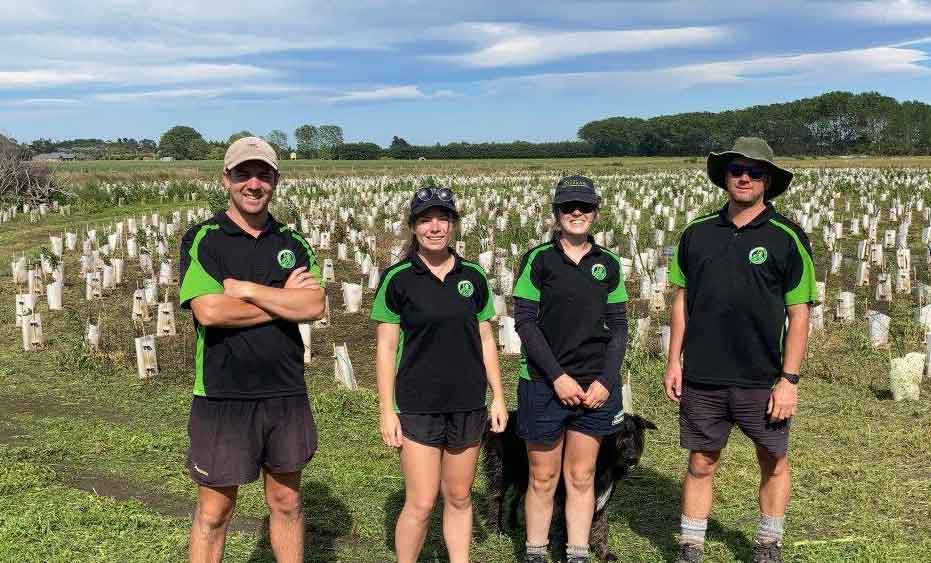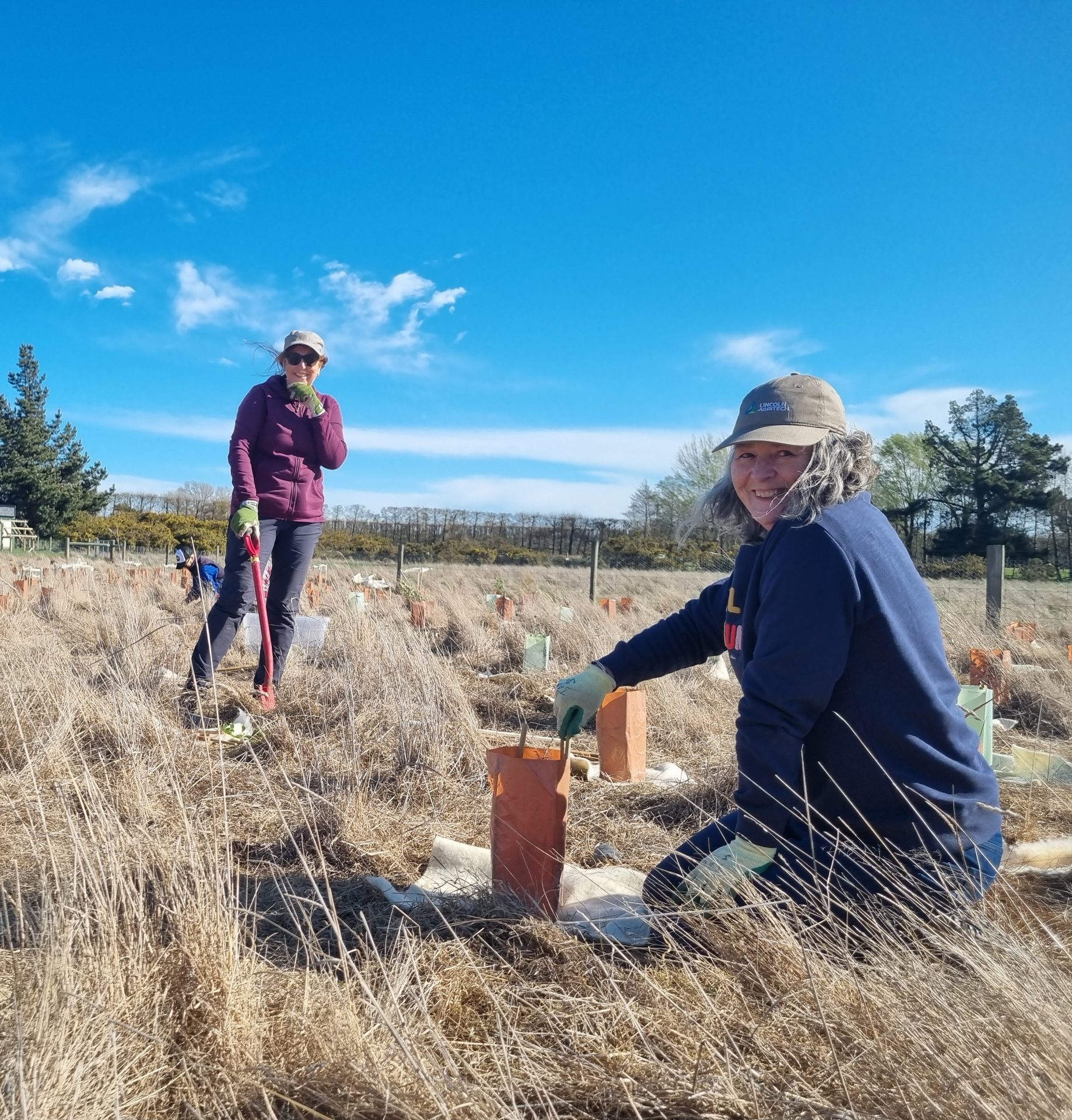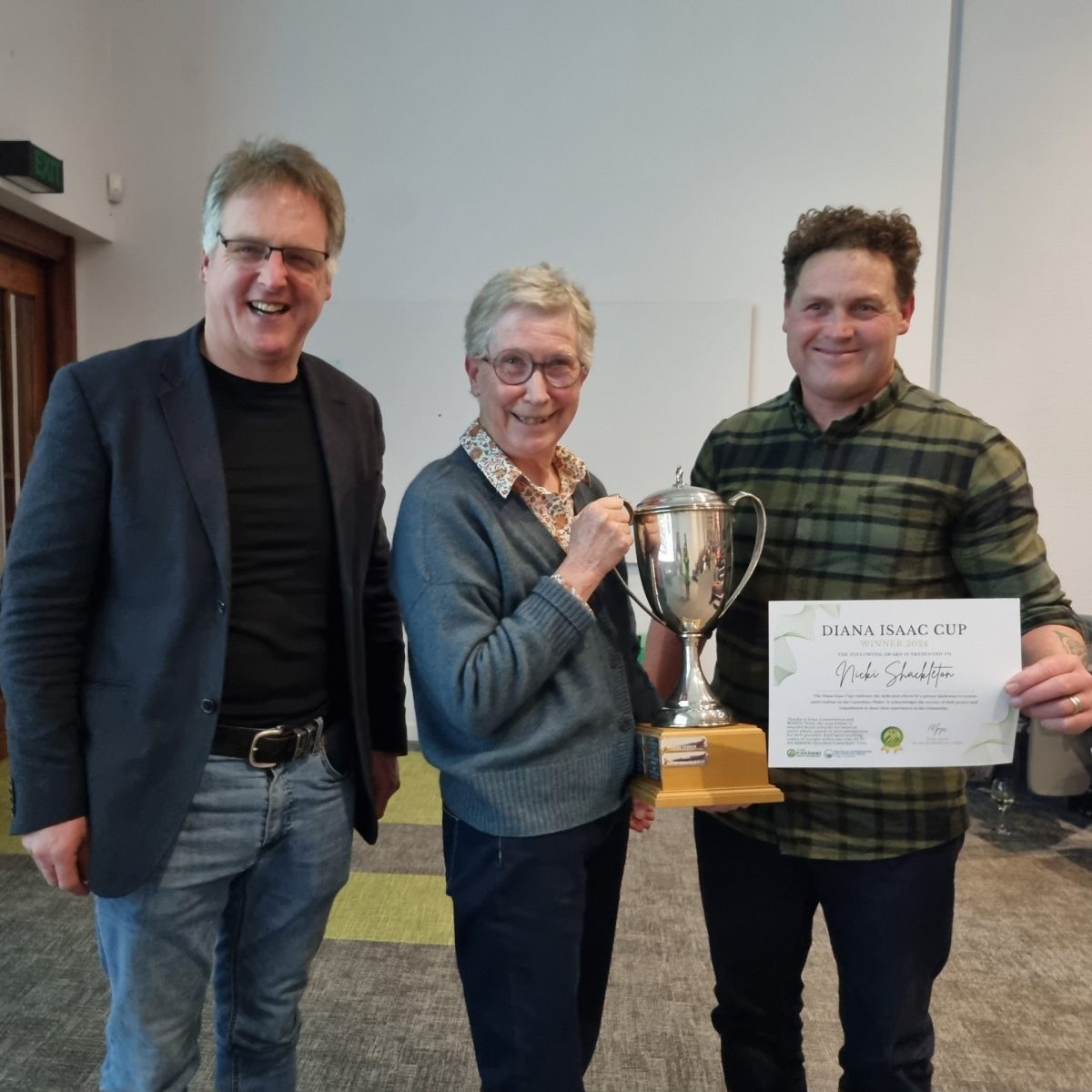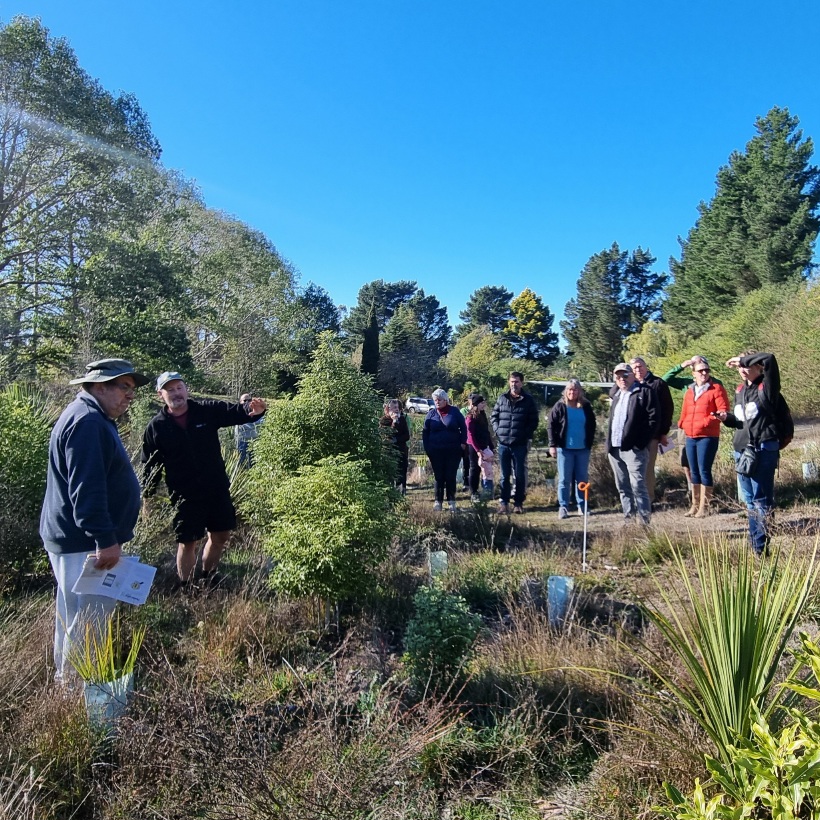A huge achievement this year has been the progress made at our two legacy sites.
These are significantly larger areas than our regular Greendots and will help to increase biodiversity by providing a more suitable and sizable habitat for native wildlife. They will help to connect our smaller Greendots and become key steppingstones in the Greenway.
The lower catchment legacy site Te Pae O Ahuriri is located alongside the Little River Rail Trail and the Huritini/Halswell River in Lincoln, very close to the reconstructed wetland project Whakaora Te Ahuriri. Our upper catchment site Ōkakaraiti is about 800 metres northeast of State Highway 73 in Springfield, and this land has been generously allocated for restoration by the landowners. A naming dedication event was held for each site before planting began, attended by representatives from Ngāi Tahu, landowners, the Te Ara Kākāriki team, and supporters of the projects.
Successfully securing funding for this three-year work programme to prepare, plant and maintain the two legacy sites resulted in being able to employ 4 fulltime kaimahi who began work in July. The capable team (pictured above) are full of enthusiasm and after an initial training and preparation period began planting at Te Pae O Ahuriri, and then continued onto Ōkakaraiti. Across both sites 50,000 plants will go in the ground as part of the three-year project. When not planting the Legacy sites, the kaimahi will be engaged in maintenance and trapping work as well as supporting landowners with restoration projects in Otahuna, and they have provided invaluable assistance on our public and school plant out days too.
It was great to welcome volunteers to plant at both legacy sites as part of our Canterbury Plant Out days earlier in the year, and the long-term plan is for the public to have access to both sites with walking and biking tracks.





